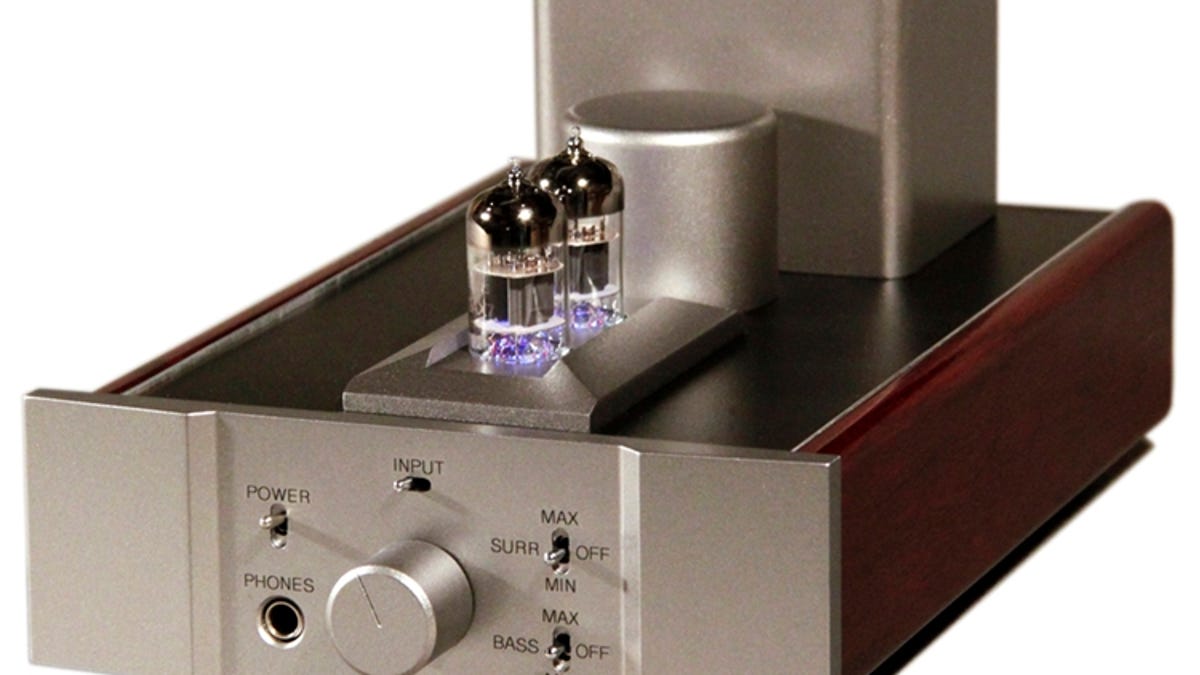A new high in high-end headphone amplifier design
If you already own a great set of full-size headphones, the Fosgate Signature Headphone Amplifier will make them sound better than ever.

The Fosgate Signature Headphone Amplifier is one of the very best-sounding amps I've ever used. It was designed by one of the greats, Jim Fosgate, a man who earned 18 audio related patents, founded a number of successful electronics companies -- oh, and he pioneered high-power car audio systems. He was also a big supporter of the very first home surround format -- quadraphonic -- in the early 1970s, and so committed to the format that even as quad was winding down, he designed the Fosgate Tate 101, arguably the finest quad processor of the era. Fosgate also created the best-selling matrix surround codec of all time, Dolby Pro Logic II, and in 2003 he won an Emmy for Development of Surround Sound for Television.
When I asked Fosgate why his new headphone amp uses tube and solid-state electronics, he said, "I'm not trying to make an old-fashioned sound, but the tubes make it sound better than an all-solid-state circuit." The amp has a patented bass boost equalizer circuit that improves low-frequency bass impact without adding bass boom or muddiness. There are three positions on the bass control: Min, Max, and Off. I didn't use the bass boost all the time, but it really helped improve the sound of some headphones, including my Sennheiser HD 700s.
The other unique feature, also patented by Fosgate, is the Panorama Control that adds spaciousness to stereo headphone sound. At first panorama seemed a little unnatural, but after I left it on for a while I preferred it. When I turned it off and returned to regular stereo, stereo seemed claustrophobic and small. You don't have to use it, but I'm glad it's there.
During my listening tests, I compared the Fosgate with two of my favorite solid-state headphone amps, the Burson Audio HA-160 (now discontinued) and the Hifiman EF-6 ($1,599) with my Grado RS-1, Sennheiser HD 700, and Audeze LCD 2 and LCD 3 headphones. The Fosgate amp had a slightly warmer tonal balance, but it sounded more transparent and clear than the two solid-state amps. Bass definition was ahead of the other two amps. The tubes definitely didn't smear or soften the sound, and even with the panorama control turned off, the Fosgate amp produced a more expansive and open sound than either the Burson or Hifiman amps.
David Bowie's new high-resolution album, "The Next Day," showcased the amp's ability to unravel dense mixes, so I could more clearly hear each sound and instrument. I especially enjoyed the Fosgate with movies, "A Late Quartet," a film about a classical string quartet dealing with change sounded wonderful. The string instruments' tone was perfect, and when the musicians practice at home, I could hear the sound of the instruments filling their room. It was like being there. When it was time to pack up the amp and send it back, I was truly sorry to see it go.
The Fosgate Signature Headphone Amplifier sells for $1,499.

